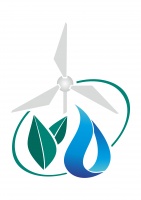Comparison of practices
| Название практики | Increasing water availability of pastures by constructing sardobas | Increasing water use efficiency on WUA and water user levels |
|---|---|---|
| Category | Water resources | Water resources |
| Tool | System for enhancing water availability | Irrigation technique and technology |
| Field of application |
|
|
| Usability of practice for adaptation to climate change | Moderate | Moderate |
| Implemented by | Ministry of Nature Conservation of Turkmenistan |
Department of Water Management and Reclamation of the Ministry of Agriculture, Food Industry and Reclamation (MoAFIR) of the Kyrgyz Republic with the support of Helvetas Swiss Intercooperation |
| Used by |
Country: Turkmenistan |
Country: Kyrgyzstan Province: Jalal-Abad Region |
| Local specifics | 17,238 ha of barkhan (sand dune), takyr (dry-type playa) and solonchak (moist-type playa) sites of the Kara Kum Desert; deep ground water occurrence |
Water User Associations (WUAs) are located to the northwest of Jalal-Abad (region’s capital) on the border of Namangan and Andizhan Regions of Uzbekistan (Kugart River Valley, 1,200 m ASL, northern tail of the Fergana Valley). |
| Practice usage period |
Start date: 01.01.2012 End date: 31.12.2016 |
Start date: 01.01.2009 End date: 31.12.2017 |
| Problem solved through this practice | Desertification and decreased productivity of desert pastures due to over-grazing around existing cattle watering sites |
Low water use efficiency on WUA and farm levels |
| Tools used in the practice | Technology of building sardobas (stone-dome covered water collection and storage reservoirs) to enhance pasture water supply |
Technical tools: Effective water use technologies, modern technologies of irrigation water management. Cognitive tools: Consultations by Helvetas Swiss Intercooperation and local experts, capacity-building training seminars. |
| Description of the practice and its results | Main actions:
Actions:
Results:
|
Actions: Capacity building:
Partnership building:
Results: The practice promoted building of WUA capacities, increasing the efficiency of irrigation water use on farm level as well as building farmer capacities on water resources management. |
| Lessons learnt and recommendations made | Lessons learnt: Construction of sardobas in takyr areas allows enhancing pasture water supply, thus, leading to the restoration of over-grazed pastures. Recommendations: The practice requires long-term planning and an integrated response with the early-on engagement of desertification experts (designing a set of measures to protect takyrs from sand drifts), state agencies (technical assistance) and pasture users (observance of pasture rotation schemes, prevention of takyrs from contamination and pollution). |
Lessons learnt: Water shortage and inefficient water use (field/farm level) pose obstacles to farmers receiving high yields and incomes from agricultural production. Excessive irrigation in upper-stream areas and water shortage in lower-stream areas, although a paradox, occur simultaneously as farmers lack knowledge on actual crop water requirements and water-efficient irrigation. Recommendations: The practice should be scaled-up across the country. It is also necessary to conduct regular trainings to raise awareness among farmers and build their capacities on applying advanced irrigation methods providing them with an opportunity to manage scarce water resources more effectively. |
| Source of practice | Traditional tools transferred from generation to generation that proved their efficiency in modern conditions |
|
| Readiness for implementation |
1. Cost of implementation: Low 2. Approximate cost of investment per 1 ha: $1,000-5,000 3. O&M costs: Low 4. Expert support: Needed at implementation stage |
1. Cost of implementation: High 2. Approximate cost of investment per 1 ha: 3. O&M costs: High 4. Expert support: Not needed |
| Brief information on the project | Project title: Responding to climate change risks for dekhan farming system of Turkmenistan on national and local levels. Project duration: 2012-2016. Project goal and objectives: build the adaptation capacity to respond to climate change impacts, including variability on local and national levels. Project beneficiaries: Bori Settlement (over 1,100 people) and Bo-Kurdak Settlement (about 4,500 people). Project implementer: Ministry of Nature Conservation and UNDP |
Project title: Effective Water Use (SEP) (Kyrg. “Suunu effektivduu paidalanuu”) Project duration: 2009-2017 (9 years). Project goal and objectives: enhance water resources management frameworks and capacities in terms of rendering services to farmers with the aim of increasing their incomes, food security and capabilities to adapt to social, economic and climate risks; improve farmers knowledge and their abilities to apply advanced field-level irrigation and water collection methods providing them with an opportunity to manage scarce water resources more effectively. Project beneficiaries: water users (farmers) and WUAs. Project implementer: Department of Water Management and Reclamation of the MoAFIR of Kyrgyzstan |
| Funding source | Government of Turkmenistan, Adaptation Facility | Helvetas Swiss Intercooperation, Swiss Agency for Development and Cooperation |
| Information sources |
|
|
| Contacts of a person, who filled this form | SIC ICWC |
SIC ICWC |
| Form submission date | 04.04.2018 | 18.05.2018 |




